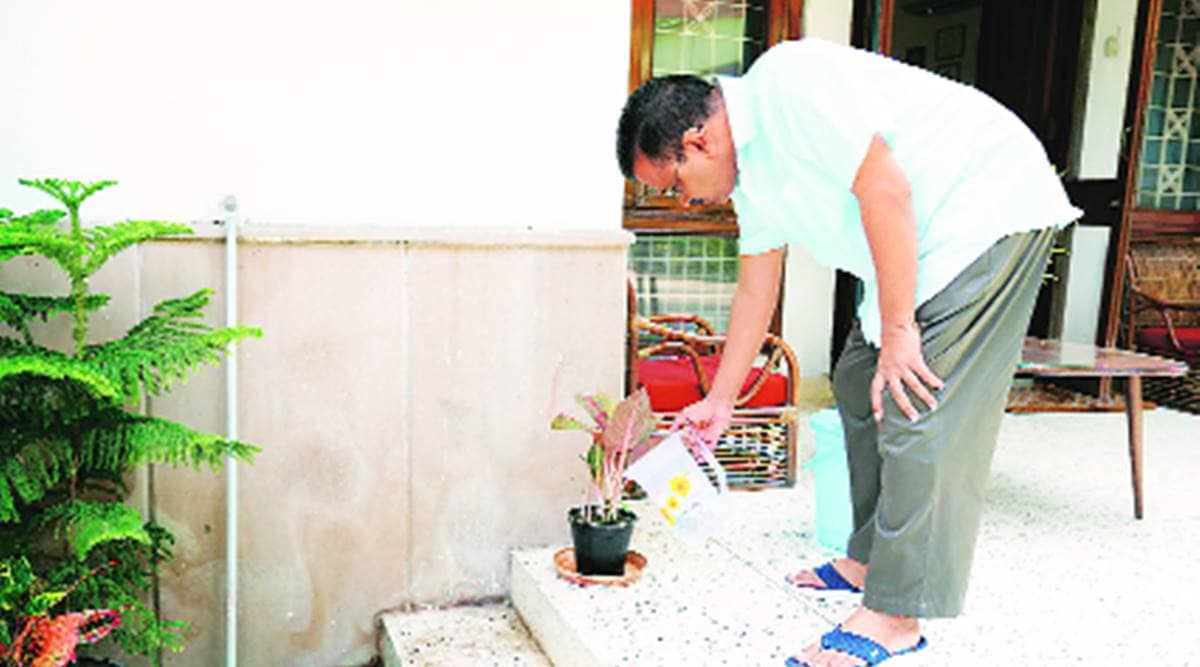 CM Arvind Kejriwal checks for mosquito breeding spots at home
CM Arvind Kejriwal checks for mosquito breeding spots at homeWhile the number of dengue cases and deaths in Delhi has been declining constantly in the last five years, this year has seen the lowest cases and zero deaths. Data shared by the MCD shows the city recorded 612 cases of the vector-borne disease between January 1 and October 31 as compared to 1,069 cases and two deaths during the same time last year.
Chief Minister Arvind Kejriwal Sunday attributed the decline to the efforts and initiatives of residents during the state government’s 10-week dengue awareness campaign — ‘10 Hafte 10 Baje 10 Minute’. Under this, people are asked to check their houses for stagnant water at 10 am every Sunday for 10 weeks.
“Your participation and solidarity in the 10-week campaign against dengue has set an example by defeating the disease for the second year in a row. Not a single death has occurred this time from dengue. I salute the commitment of Delhi people,” tweeted the CM, as the campaign ended.
There are four types of dengue strains, with types II and IV considered to be more severe and requiring hospitalisation.
Dr Shobha Broor, former head of the department of microbiology at AIIMS, said: “Dengue cases are directly proportional to the amount of rain, water accumulation. This year, there has hardly been any rain in Delhi-NCR. Also, unless a new strain comes up, there will not be any substantial rise in the number of cases. Cases peaked in 2015, after which there has not been a major change in the virus strain. People have become immune to the present strain and chances of getting infected are low. Whenever the strain changes, cases will rise. The strain does not have any specific cycle, it may change in a year or next five years.”
Cases are reported from mid-July to November-end. Depending on the weather, this may stretch up to mid-December. After the massive outbreak in 2015-2016, the government has been focusing more on awareness campaigns, which starts in March, as a part of preventive measures.